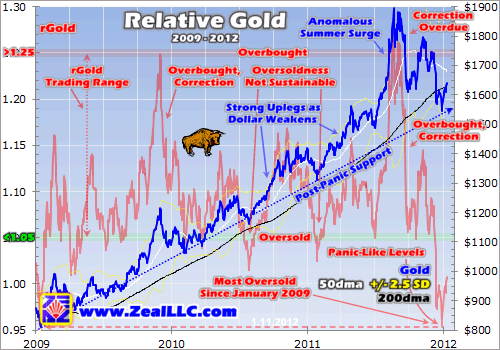A Holistic Approach To Trading Gold
Post on: 4 Апрель, 2015 No Comment

Since the beginning of time, gold has had a special place in history. It has been used to build religious idols, settle political differences, honor monarchs, demonstrate affection, serve as currency and, more recently, has been used for commercial processes. Until 1971, the U.S. dollar was backed by gold, which is still held by central banks around the world for use in times of emergency. It also holds promise for traders — if they can find the trend in this often volatile commodity.
Background
From the Roosevelt administration during the Great Depression in the 1930s until President Nixon took the country off the gold standard in 1971, the price of an ounce of gold had been fixed at $35/ounce.
Following the removal of the gold standard for currencies, gold prices skyrocketed 2,200% in U.S. dollar terms over the next nine years, peaking briefly above $800 in 1980. It then spent the next 19 years in a bear market. dropping as low as $260 in 1999 before starting its next long-term rally. However, thanks to an easing of currency restrictions following the last recession, the Fed is facing increasing challenges.
The effective Fed funds rate was above 6% in early January 2001, but by early 2004, the rate had fallen more than 80% to 1% and the Fed did not start increasing the rate again until June 2004, more than a year after the rally had begun. The Fed has taken a much more accommodative stance on rates, which continued through 2007. A weak dollar and rocketing commodity prices during this year are the evidence of this: gold again surpassed $800 in 2007 and gold reached well above $1800 dollars an ounce in 2011 (after the financial crisis ). Although we’ll never know how high a new peak will be until it’s behind us, increasing volatility appears to be the modern gold reality.
A Method for Trading Gold
As you can see in Figure 1, one strategy is to watch for situations where the relative strength index (RSI) shows an extreme level that often marks market tops. It is also common to watch for extreme lows because this often signals a market bottom (shown by red circles). In this case, each RSI signal is not acted upon unless it is confirmed by a moving average crossover. Each trade is marked with a letter. In this chart, we are using nine-day (purple line) and 18-day (blue line) simple moving averages
Another powerful trading tool, known as divergence. involves looking for situations when the price of an asset and an indicator move in opposite directions. As you can see from the chart below, the numbers 1 through 3 signal areas with positive divergences (in green) and negative divergences (in red). Another good way of further confirming signal strength is to look for support or breach of trendlines (dashed blue lines).
Technical Tips
One of the simplest technical tools is also among the most useful, and that is the trendline. Trendlines are also a great way to confirm other trading signals such as those generated by the relative strength index or a moving average crossover. Whenever possible, it is best to wait until the trendline has been breached before executing a trade. As you will see from the charts below, rising trendlines are created by simply connecting a series of rising bottoms to gauge where the stock will potentially find levels of support. On the other hand, downward sloping trendlines are created by connecting a series of lower highs. This simple tool is an optimal method for traders to use for determining an asset’s direction.
Moving averages have become a popular trading tool because they are simple to use and easy to generate in most charting programs. The idea is to buy when the shorter term, faster moving average crosses above the slower one and to sell when the faster average crosses below the slower average. This works great in a trending market but not so well in range-bound markets. The trick is in knowing what type of market you’re in. Because markets trend about one-third of the time on average, relying on moving averages as your primary tool can become quite costly. This is where trendlines can help.

RSI is an oscillator that measures price momentum. It is also very useful in showing divergences with price. As Figure 1 shows, the RSI often hits extreme highs and lows at gold’s price turning points. For example, with the first red circle on the chart, the RSI hit an extreme as gold hit its 2006 peak around $725.
Looking at the concept of divergence in Figure 1 (above), note the differences between the RSI and price. As the first green lines on both shows, the second low in the RSI was higher than the first low, while the second price low was lower than the first. This warns the trader that buying power is building. Sure enough, a rally followed. Red lines at Point 2 show an example of negative divergence.
Fundamental and Intermarket Considerations
Intermarket relationships can be helpful in trading gold. As such, it’s important to watch the euro and the U.S. dollar index as well as crude oil prices for clues on gold’s trending action; they are important outside markets for the precious yellow metal.
It is important to note that gold prices have rallied nearly every time the dollar has dropped (see Figure 3). When gold rallies, oil usually rallies along with it.














